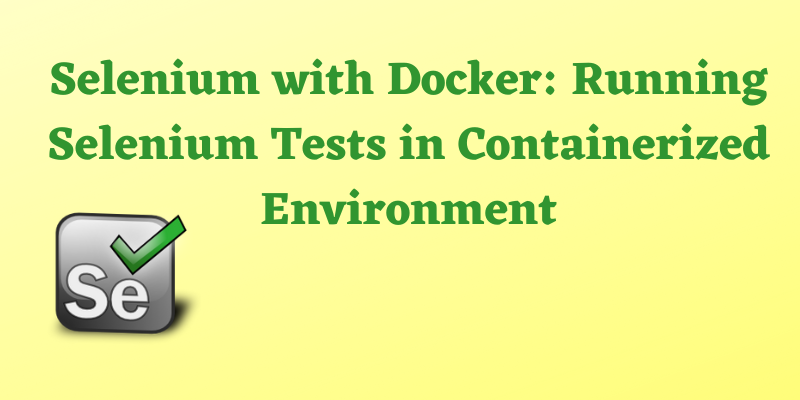
Selenium is a free (open-source) automated testing tool for validating web applications across various browsers and platforms. Selenium Test Scripts can be created in a variety of computer languages, including Java, C#, and Python. Selenium Testing refers to testing carried out with the Selenium testing tool. Join FITA Academy’s Selenium Training in Chennai to get instructed by our skilled trainers using real-world examples and case studies.
Running Selenium Tests with Selenium and Docker:
Introduction to Selenium and Docker:
We’ll start with Selenium, a popular web application testing framework, and Docker, a containerisation technology. We will discuss their roles in test automation and containerisation and the benefits of integrating them.
Setting Up the Docker Environment with Selenium:
To begin, we’ll walk readers through configuring the Docker environment for Selenium testing. We’ll go over installing Docker and Docker Compose, which are required for generating and managing Docker containers.
Creating a Selenium Docker Images:
We’ll review how to make a custom Docker image designed for running Selenium tests. This process includes selecting acceptable base images, installing required dependencies, and customizing the image to function flawlessly with Selenium.
Running Selenium Grid with Docker:
Because Selenium Grid supports remote test execution, it is suited for large-scale applications. We’ll show you how to build a Selenium Grid with Docker containers, allowing simultaneous test running across numerous nodes.
Containerizing Selenium Tests:
This section will go over how to containerize Selenium tests with Docker. We’ll go over the advantages of encapsulating container tests, how to create Docker containers for Selenium tests, and how to manage test dependencies.
Enroll Selenium Online Training to get trained from our expert trainers at your flexible time.
Managing Test Data and Environments:
We’ll look at methods for managing test data and environment settings in Dockerized Selenium tests. Handling database containers, utilizing environment variables, and managing test data volumes within Docker containers are all part of this.
Integration with Continuous Integration Tools:
We’ll show you how to use Dockerized Selenium testing with popular CI technologies like Jenkins or Travis CI. This interface enables the execution of tests within the CI pipeline to be smooth, ensuring efficient test automation.
Troubleshooting and Debugging:
Dealing with problems and debugging are unavoidable aspects of test automation. We’ll go over how to troubleshoot typical issues that may happen while running Selenium tests using Docker. Readers will learn how to troubleshoot and monitor Dockerized Selenium tests effectively.
Conclusion:
In this blog, you would have understood Selenium with Docker: Running Selenium Tests in Containerized Environment. Join Selenium Training in Bangalore to get trained by our expert trainers with excellent placement training and course certification.
